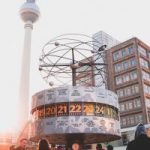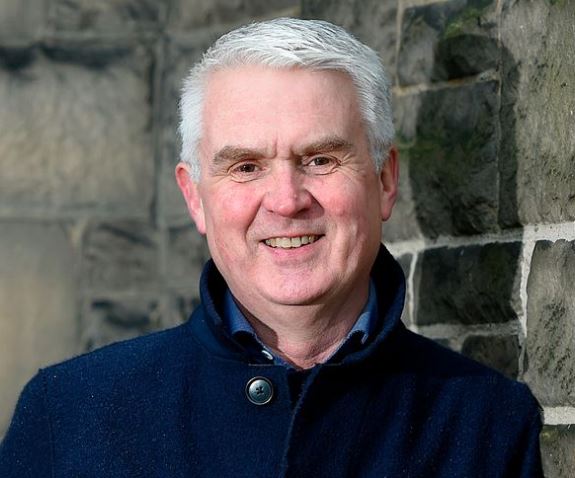 I never went to East Berlin. Not really. By the time I first set foot there on a freezing, grey morning in December 1989, it was too late.
I never went to East Berlin. Not really. By the time I first set foot there on a freezing, grey morning in December 1989, it was too late.
I was 28. The Berlin Wall, built six months after I was born, had fallen just weeks earlier. Those exultant scenes of hammers and chisels being taken to the concrete barrier — long imprinted in the memory of anyone over 40 today — were still held in the world’s gaze.
Across the world, the Wall had been the most powerful symbol of the Iron Curtain. Not for nothing had Ronald Reagan urged Mikhail Gorbachev to tear it down.
I was staying with a friend near Kleistpark in West Berlin’s Schöneberg district. She had been there that night. As she regaled me with her recollections, the story beyond the newsreel came to life.
Arm in arm with a fellow reveller from the West, she’d strode down Unter den Linden, swigging from a bottle of something they scarcely needed. They were drunk with exhilaration.
I marvelled that she had been there — part of history before it had even been written. My visit that December was fortuitous but there was no getting away from the fact I’d missed the main event.
Everything had changed, not just in Berlin. The fall of the Wall was part of a chain reaction that had taken hold across Eastern Europe. And a lightning rod for events that followed far beyond Germany.
The German Democratic Republic would stagger on for another 10 months, but its repressive potency had suffered a mortal blow on that triumphant night.
My friend had written to me in London the previous year urging me to visit. But in the busyness of life, I’d failed to heed her call. A mistake that. Oh, to be a time traveller. That day in December was the nearest I got to a place which was disappearing.
Leaving her apartment, we took the U Bahn to Yorkstrasse where we changed trains to travel on the S-Bahn through the Nord-Süd Tunnel, arriving underground at Friedrichstrasse.
That brief trip took us by way of Potsdamer Platz and Unter den Linden, two of the city’s ghost stations, Geisterbahnhöfe, at which trains didn’t stop in divided Berlin.
After the border checks at Friedrichstrasse — life behind the Wall had returned to a kind of faux normality — we headed first to Alexanderplatz with more Ostmarks than we could possibly need for a day.
Just days before the Wall toppled, more than half a million East Germans had protested there. Wir Sind Das Volk — We Are The People. But however determined and hopeful they must have been, they couldn’t have imagined its demise would come so quickly.
I didn’t own a camera or keep a journal. I have no photographs or diary entries to conjure up that day. Just a few fragmented memories. And yet it’s one I’ve returned to in my mind’s eye almost as much as any other in my life.
I have often wished I could recall more. But I was too busy living it to record it. There’s a lot to be said for being in the moment unfettered by social media. I was just there.
I had passed through East Berlin a few days earlier. Arriving bleary-eyed on an overnight train from Stuttgart, I mused that it was too late to defect. I watched East Berliners trudging to work through the snow. Two-stroke Trabants chugged along beside them belching out fumes into the brown coal sepia.
Now I was there, the city took on a different complexion from the iconic images of the multi-coloured outer wall that had glued us to our television screens. A reminder that for East Germans, the inner wall, which we never got to see, was graffiti-free and beyond it lay a death strip.
East Berlin seemed monochrome. It took me a moment to realise why and then it came to me. There was no advertising. Living in London I’d become so accustomed to the bright lights of capitalism, I had to blink to register their absence.
In thin winter light, we took a tram up Prenzlauer Allee, accompanied by the Pet Shop Boys’ West End Girls on a transistor radio. Not ours but that of an East Berliner. It was as if he’d known we were coming.
Later as dusk fell, we went in search of gay East Berlin. Tripping lightly down Stargarderstrasse under dim streetlights, we arrived at a place you’d hardly have known was there. Beyond its heavily curtained doorway, we took tea while a string quartet played. Its quaintness was a far cry from West Berlin’s vibrant and raunchy gay scene.
Our final stopping point of the day was a local restaurant where we ate simple fare and drank beer among East Berliners. Berlin may have been caught in the world’s spotlight, but daily life went on.
A trip on a tram, afternoon tea and an early evening meal. Hardly remarkable, yet utterly memorable.
It would be seven years before I returned to East Berlin. Life got in the way again. By then, though remnants of the GDR were still plentiful, it was one half of a city long since unified.
I’ve lost count of the number of times I’ve returned to Berlin in the intervening years — 40 visits, maybe more. Mostly a weekend, sometimes longer. Nearly always to Prenzlauer Berg. All because the footfall of that first trip was the beginning of a love affair which still endures.
And yet to this day, that first attack of love feels almost fraudulent. I went to East Berlin, a card-carrying member of the Communist Party of Great Britain. I was part of a movement which, however critical of Stalinism it had become, was dedicated to something, the downfall of which the city now basked in.
The most extraordinary thing about that day though — and my time in West Berlin — is that among all the images I can still recall, the Wall itself is not one of them. It’s almost as if it wasn’t there.
And of course, in a way it wasn’t. The structure was still more or less intact, but its agency had been destroyed. I can’t remember it because — in its truest sense — it had gone. Just as East Berlin had.
I still divide the city in two when I’m in Berlin. The Wall I don’t remember seeing has left its mark, even for me.
And whenever I think of November 9th, 1989 — still the most significant political moment of my life — I think of that day. And my trip to a place that had already slipped into the past.
Photo by Anastasia Dulgier on Unsplash
